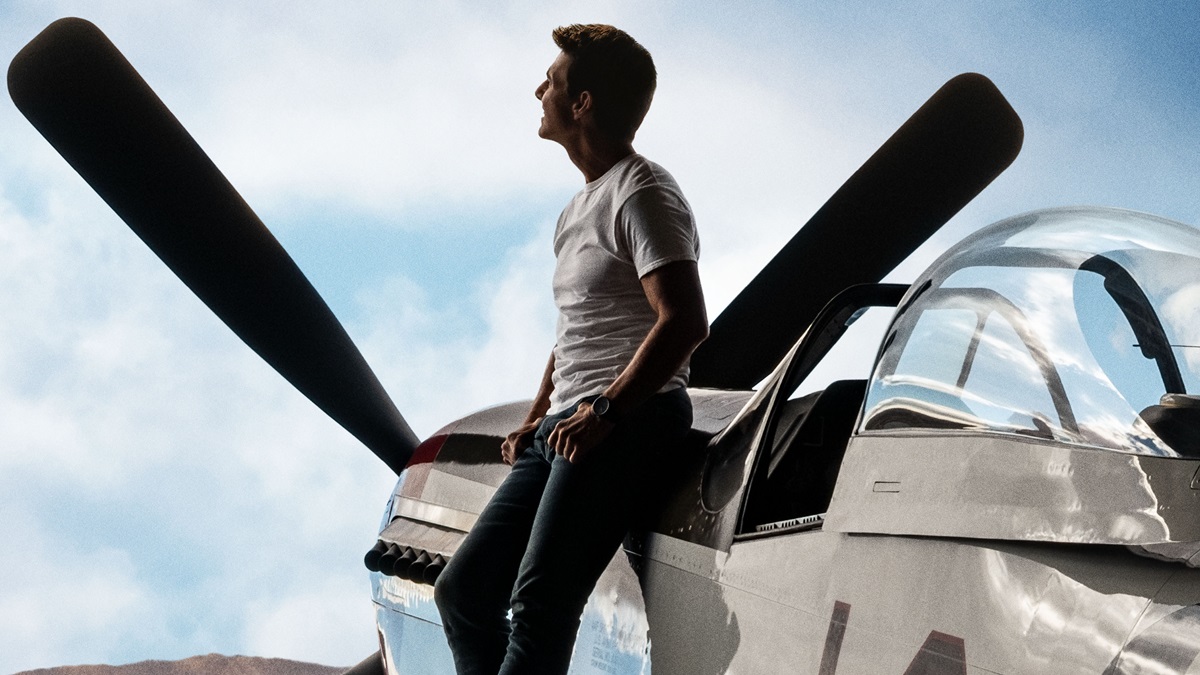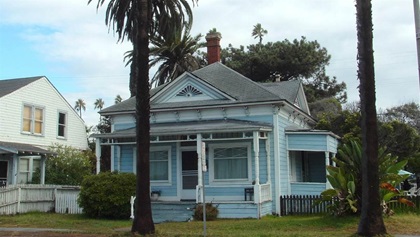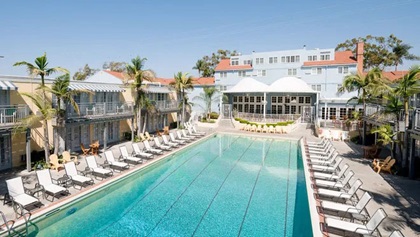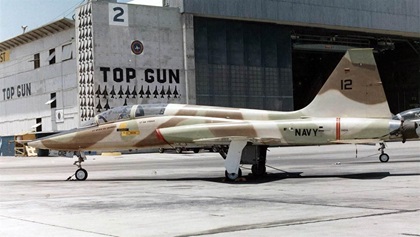Coming this May
Return to the danger zone
By Julie Summers Walker and Collin Callahan
It is 1986. Our hair is big, our shoulders padded, and our sunglasses are Ray-Bans.
Maverick's back








It’s the summer movie season, and the biggest show in town is playing at the local movie theater—it’s Top Gun with Tom Cruise and everyone is feeling the need…the need for speed.
How it is more than 35 years since the release of that iconic movie is—for those of us old enough to have experienced it—remarkable. More remarkable, really, in this age of sequel after sequel (anyone have an original idea?) is that it’s taken almost 40 years to release a second installment of the film. Top Gun: Maverick hits theaters May 27, nearly two years after its original release date.
The original movie was as important to the U.S. pilot population as the end of World War II and the Vietnam era. While many young men and women came home from Europe and the Pacific to continue their passion for flying by using the G.I. Bill for flight lessons and soldiers returned from Southeast Asia and continued to fly as an avocation, Top Gun’s portrayal of the exciting, sexy life of naval aviators in the Navy Strike Fighter Tactics Instructor program reignited the nation’s fascination with flying. The U.S. Navy saw an increase of 500 percent in applicants for its aviation program and throughout the summer of 1986 capitalized on it by putting recruiting booths outside of theaters. Top Gun grossed $357 million worldwide, it made Tom Cruise an international star (who also became a pilot), saw Ray-Ban sunglasses sales increase 40 percent (the brand was introduced in 1937), and collectively took our breath away.
Can Cruise do it again?
The movie
Just like when you stumble on someone who says they have never seen Star Wars or Back to the Future or any other iconic movie, it’s hard to imagine someone who never saw Top Gun. But they are out there. So, for them, here’s the synopsis: Hot-shot U.S. Navy pilots compete for the Top Gun trophy (in real life, there is none) by outflying each other in F–14 fighters; party a lot in a California beach town; fall in love; create lifelong friendships; and lose a fellow officer to an aircraft accident. All set to a very cool 1980s soundtrack—you have heard Kenny Loggins’ Danger Zone, right?
The movie was directed by the late Tony Scott, who read a story about the NAS Miramar fighter pilots in California magazine. Both the U.S. Navy and the Department of Defense lent support to the filming—although the DOD charged filmmakers $10,000 an hour for the F–14 flights (and charged $7,800 per hour for fuel). All the cast flew several times in the F–14 for experience, but only actor Anthony Edwards, who played “Goose,” did not vomit during his flight (Cruise did). By the way, Edwards is now a Cirrus pilot (see “Goose Learns to Fly,” February 2013 AOPA Pilot).
“I am now the guy in the pilot’s seat who gets to push the good-looking guy out of the airplane,” Edwards said. (In the movie, Edwards is the radar intercept officer to actor Tom Cruise’s pilot—“Maverick”—and dies when they eject from an F–14 Tomcat.) In the new movie, Goose’s son Lt. Bradley “Rooster” Bradshaw, played by Miles Teller, is training under Maverick (the return of Cruise’s character Pete “Maverick” Mitchell) for a specialized mission.
Other than Cruise, the only returning cast member is Val Kilmer, who played “Iceman.” Kilmer lost his voice in 2015 during a battle with throat cancer and his voice is said to be digitally reconstructed for the film. Tom “Iceman” Kazansky is now a four-star admiral, while Maverick has never really advanced from Top Gun.
“Thirty-plus years of service. Combat metals. Citations. Only man to shoot down three enemy planes in the last forty years. Yet you can’t get a promotion, you won’t retire, and despite your best efforts, you refuse to die,” a rear admiral, played by Ed Harris, says to Maverick in the new movie’s trailer. “You should at least be a two-star admiral by now. Yet here you are. Captain. Why is that?”
“It’s one of life’s mysteries, sir,” Maverick says.
Neither of the two love interests—Meg Ryan as Goose’s wife and Kelly McGillis as Dr. Charlotte “Charlie” Blackwood, a civilian instructor who became Maverick’s girlfriend—return in the new movie. Charlie’s character was based on Christine Fox, a defense analyst at Naval Air Station Miramar in the 1980s who rose to acting deputy secretary of defense during the Obama administration.
Another real-life character in the original movie was Scott Altman, who flew Cruise’s flying scenes. “Scooter” Altman was a naval aviator and test pilot who later became a NASA astronaut and flew four space shuttle missions. He was the pilot who famously “flipped the bird” at an enemy MiG pilot in the movie.
Renowned aerobatic pilot Art Scholl was hired to do in-flight camera work for the film. The script called for a flat spin, which Scholl was to perform and capture on an onboard camera. Scholl entered the spin but was unable to recover and crashed his Pitts S–2 into the Pacific Ocean and died. He was 53.
“This is dedicated to the memory of Art Scholl,” the credits of Top Gun conclude.
Camera work
Top Gun: Maverick promises to take movie-goers into the cockpit, showing aviation like never before in a Hollywood film. Producer Jerry Bruckheimer called it “a love letter to aviation,” and a behind-the-scenes trailer shows the extent to which producers went to bring flight to the silver screen.
When Top Gun was filmed in the ’80s, it used then-groundbreaking techniques. In-cockpit sequences were shot in a hangar using the cockpit of a scrapped F–14 surrounded by projection screens. A light spun around the cockpit to mimic the sun and match rolling maneuvers. Although a convincing representation for the time, it wasn’t the real thing.
For Top Gun: Maverick, actors were placed in the back seats of F/A–18s with a half dozen digital IMAX cameras pointed at them. When they show strain under high-G loads in the film, they aren’t acting.
Air-to-air shots also used state-of-the art technology. Typically, aerial cinematographers mount a camera and lens inside a stabilized ball on the nose of a helicopter, or they shoot through a periscope that extends below the belly of an executive jet. Both systems produce the stunning footage that audiences have seen in the past, but they aren’t suitable for every situation. Helicopters and large gimbal systems can’t be used in high-speed flight and shooting through a periscope diminishes image quality; the 2019 film producers wanted to capture the power, speed, and maneuverability of fighters.
Enter CineJet, an Aero Vodochody L–39 Albatros that features a customized gyro-stabilized camera system designed for high-speed aerial cinematography. The jet trainer has a top speed of more than 450 miles per hour, four times faster than the helicopters commonly used in aerial cinematography. The camera system, made by New Zealand company Shotover, hangs off the nose of the jet from a specially designed mount. With the lens just below the belly of the airplane, cinematographers have an unobstructed, 360-degree view of the airplane’s surroundings.
“We needed to take [aerial cinematography] to the next level,” said Kevin LaRosa II, vice president of production at Helinet Aviation Services and the aerial coordinator and camera pilot for Top Gun: Maverick. He worked with a team of technicians to develop CineJet. “I wanted to build something that we could go out and do aerobatics with––including a camera system that could push the edge of aerial photography like no one has done yet.”
Known for his work on Iron Man (2008), The Avengers (2012), and Transformers: The Last Knight (2017), LaRosa has worked on more than 100 motion picture and commercial productions (see “Pilots: Hollywood’s Youngest Aerial Coordinator,” February 2015 AOPA Pilot). He is an airline transport pilot, has type ratings in several Learjet models, and has a Part 107 UAS certificate for flying unmanned aircraft for the film and television industry.
“It’s a very physical and mental exercise when you’re out in the airplane making these shots,” LaRosa said. “You’re not only flying an airplane, you’re directing another airplane or multiple airplanes on how they should be flying, and you’re watching the image to make sure that you’re putting yourself in the right place. When we come back and look at footage for the first time, it’s normally very rewarding. All of that hard work, all of the planning, comes to fruition.”
In a recent Facebook post, LaRosa offered details on the platforms that he and the Helinet team used in filming Top Gun: Maverick.
“The L–39 CineJet was chosen for most of the dog fighting and low-level high energy flying,” LaRosa said. “The Phenom [300] Camera Jet was chosen for any extended over water operation, extended range missions, or complex sequence that needed the flexibility of carrying two Shotover F1’s at the same time with different lens capabilities.” A camera helicopter was also used, along with cinema drones, which “were able to operate in places we couldn’t get full-size camera aircraft.”
It’s a wrap
Only time will tell if Top Gun: Maverick will get movie-goers to head across the sky on mighty wings, but it did inspire some of the actors to jump into the cockpit. As a Christmas gift during filming, Cruise gave his fellow cast members flight lessons and ground school courses. Actors Glen Powell and Jay Ellis got their private pilot certificates after filming wrapped. Powell credited Cruise and his P–51K Mustang (which appears in a trailer for the film) for encouraging him.
“After wrapping a shooting day, Tom would rocket off into the sunset in his P–51 while I would limply shuffle into the cast van. The wings were just so much cooler than the wheels,” Powell wrote in an Instagram post celebrating his first solo.
For his part, Cruise reportedly also tried to pick up a new rating during the production: pilot in command of an F/A–18 Super Hornet. The request was denied by the Department of Defense. The U.S. Navy was unwilling to take the risk.
Or, better said, the Navy wasn’t going to write the check that even Cruise’s ego couldn’t cash. 

 “Top Gun House” in Oceanside. Before 1986, the structure was known as the Graves House, an 1887 Victorian beachfront cottage built for Dr. Henry Graves. Fans of the movie will remember Maverick pulling up on his motorcycle to the picturesque home of his girlfriend Charlie. Developers of the new Mission Pacific Hotel moved the house about a block from its original location in 2020 during the resort’s construction. After years of being inaccessible, the historic home was renovated as part of the development and is opened alongside the hotel. It’s being marketed as a vintage lounge that will take your breath away—a reference to the Academy Award-winning original song “Take My Breath Away” written for the movie and performed by the band Berlin.
“Top Gun House” in Oceanside. Before 1986, the structure was known as the Graves House, an 1887 Victorian beachfront cottage built for Dr. Henry Graves. Fans of the movie will remember Maverick pulling up on his motorcycle to the picturesque home of his girlfriend Charlie. Developers of the new Mission Pacific Hotel moved the house about a block from its original location in 2020 during the resort’s construction. After years of being inaccessible, the historic home was renovated as part of the development and is opened alongside the hotel. It’s being marketed as a vintage lounge that will take your breath away—a reference to the Academy Award-winning original song “Take My Breath Away” written for the movie and performed by the band Berlin. South from Oceanside, check in at Lafayette Hotel, Swim Club and Bungalows just north of downtown San Diego. The hotel opened in 1946 with Bob Hope as its first guest. Johnny Weissmuller, known for winning five Olympic gold medals in swimming and for playing Tarzan on the big screen, designed the pool that attracted other celebrities through the years. The property is listed on the National Register of Historic Places and is now a boutique hotel. The ballroom became a movie set for “Top Gun,” converted to a crowded bar for one of the most famous scenes: Maverick and Goose singing “You’ve Lost That Lovin’ Feelin’” to Charlie.
South from Oceanside, check in at Lafayette Hotel, Swim Club and Bungalows just north of downtown San Diego. The hotel opened in 1946 with Bob Hope as its first guest. Johnny Weissmuller, known for winning five Olympic gold medals in swimming and for playing Tarzan on the big screen, designed the pool that attracted other celebrities through the years. The property is listed on the National Register of Historic Places and is now a boutique hotel. The ballroom became a movie set for “Top Gun,” converted to a crowded bar for one of the most famous scenes: Maverick and Goose singing “You’ve Lost That Lovin’ Feelin’” to Charlie. Naval Air Station Miramar (now Marine Corps Air Station Miramar) was home to the real TOPGUN. You can drive by the site year-round, but the best way to feel the “need for speed” is to visit during an airshow. It’s the largest military airshow in the world and typically happens in September.
Naval Air Station Miramar (now Marine Corps Air Station Miramar) was home to the real TOPGUN. You can drive by the site year-round, but the best way to feel the “need for speed” is to visit during an airshow. It’s the largest military airshow in the world and typically happens in September.

